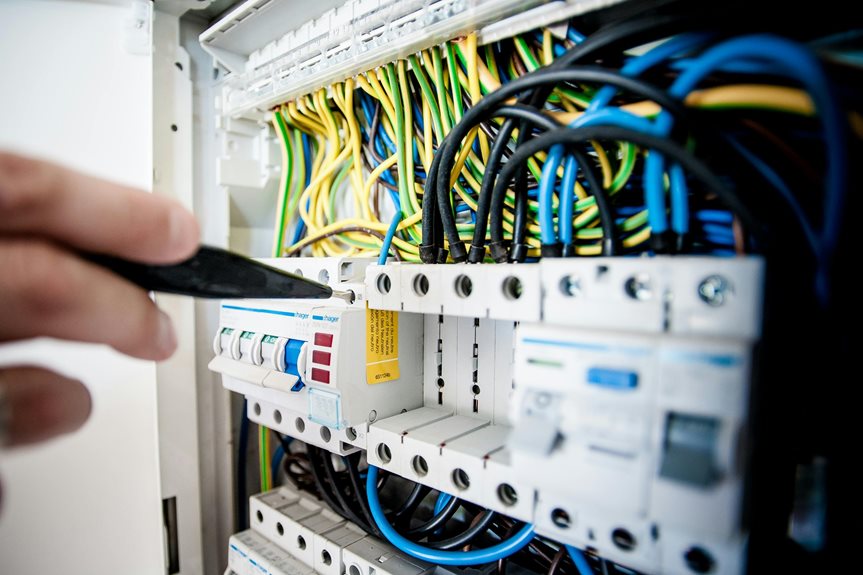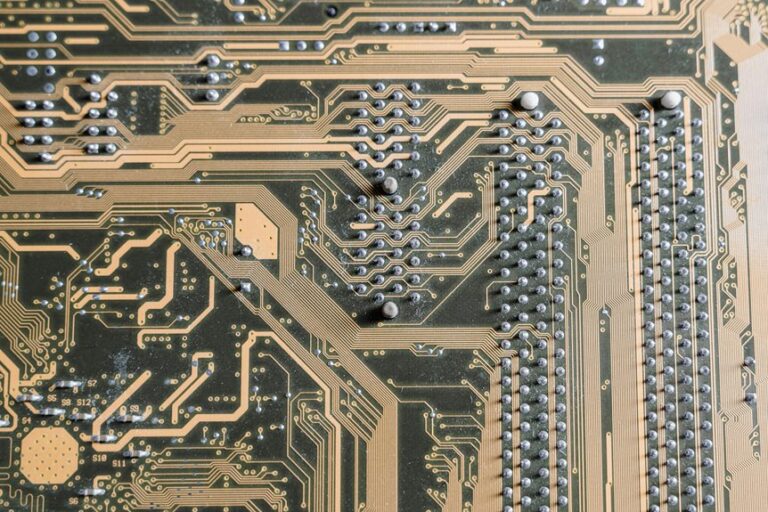You're likely aware that Electrical Energy Management Systems (EEMS) play a pivotal role in optimizing energy use in various environments. By integrating smart technologies and data analytics, these systems offer real-time insights that can greatly enhance operational efficiency. However, understanding the intricate components and mechanisms of EEMS is essential for realizing their full potential. What specific benefits can these systems provide, and how can they be tailored to meet unique operational demands? The answers to these questions could redefine your approach to energy management.
What Are EEMS?
When you think about optimizing energy use, Electrical Energy Management Systems (EEMS) come to mind as essential tools in modern energy strategies. EEMS provide a thorough framework for monitoring, controlling, and optimizing electrical energy consumption within facilities. By integrating advanced measurement technologies, data analytics, and automated control systems, EEMS enable you to gain real-time insights into your energy usage patterns.
At their core, EEMS facilitate enhanced decision-making processes regarding energy consumption. These systems collect data from various sources, including sensors and smart meters, allowing for detailed analysis of energy flows. You can identify inefficiencies and evaluate the impact of operational changes on energy performance.
In addition, EEMS support predictive analytics, enabling you to forecast energy demands and adjust usage proactively.
The implementation of EEMS can lead to significant cost savings and improved sustainability. By optimizing energy use, you can reduce waste and lower greenhouse gas emissions, aligning with environmental goals.
Ultimately, EEMS represent a strategic approach to energy management, providing you with the tools necessary to achieve operational efficiency and drive innovation in energy practices.
Key Components of EEMS
Understanding the key components of Electrical Energy Management Systems (EEMS) is important for effective energy optimization. At the core of EEMS are data acquisition systems, which collect real-time energy consumption data from various sources. This data feeds into analytical tools that process and interpret energy usage patterns, allowing you to identify inefficiencies and areas for improvement.
Another significant component is the centralized control system. This system enables you to manage and adjust energy flows across different facilities or departments, ensuring that you're using energy where it's most needed.
Additionally, integration with renewable energy sources, such as solar panels, enhances your overall energy strategy by allowing for real-time adjustments based on energy availability.
You also need advanced reporting tools that provide insights into energy usage over time, helping you make informed decisions.
Finally, user interfaces for operators play an essential role, as they allow you to visualize data and interact with the system effectively.
Benefits of Implementing EEMS
Implementing an Electrical Energy Management System (EEMS) offers numerous advantages that can greatly enhance operational efficiency. By adopting an EEMS, you can considerably improve your energy usage, reduce costs, and boost sustainability efforts.
Here are three key benefits you'll experience:
- Cost Reduction: EEMS helps you analyze and optimize your energy consumption patterns. By identifying inefficiencies, you can make informed decisions that lower your utility bills and reduce operational costs.
- Enhanced Monitoring: With real-time data collection and analysis, you gain insights into your energy usage. This allows you to track performance metrics and identify areas for improvement, ensuring that you're always aware of how your systems operate.
- Sustainability Goals: Implementing EEMS aligns your operations with environmental standards. By optimizing energy use and reducing waste, you contribute to a more sustainable future, which can also enhance your corporate image and appeal to eco-conscious customers.
How EEMS Work
An Electrical Energy Management System (EEMS) operates through a combination of advanced technologies and analytical processes designed to optimize energy consumption in real time.
It begins with data acquisition from various sources, such as smart meters and sensors, that track energy usage across different systems. This data is then transmitted to a centralized platform where it's analyzed.
You'll benefit from algorithms that identify patterns and anomalies in energy consumption, allowing you to pinpoint inefficiencies.
The EEMS then employs predictive analytics to forecast energy demand based on historical usage and external factors like weather conditions.
Once these insights are generated, the system implements control strategies to adjust operations dynamically.
For instance, it can automate the scheduling of equipment to run during off-peak hours, thereby reducing costs. You can also set parameters to prioritize energy usage based on critical needs, ensuring that essential operations aren't compromised.
Case Studies and Applications
In this section, you'll explore various case studies that highlight the effectiveness of Electrical Energy Management Systems (EEMS) across different sectors.
You'll see how industrial applications optimize energy usage, commercial entities achieve significant savings, and residential systems integrate seamlessly for enhanced efficiency.
Understanding these applications will provide valuable insights into the potential benefits of implementing EEMS in your own context.
Industrial Applications Overview
Electrical energy management systems (EEMS) play an essential role in optimizing industrial processes, demonstrating significant benefits across various sectors. By implementing EEMS, you can enhance energy efficiency, reduce operational costs, and improve sustainability.
Here are three key applications where EEMS make a noticeable impact:
- Manufacturing: EEMS help track energy consumption in real-time, allowing for immediate adjustments to machinery operations. This leads to decreased energy waste and increased productivity.
- Food Processing: In this sector, EEMS can manage energy-intensive processes such as refrigeration and cooking, ensuring that energy is used efficiently while maintaining product quality and safety standards.
- Chemical Production: By integrating EEMS, you can optimize heating and cooling processes, minimizing energy costs and enhancing reaction efficiencies. This not only lowers expenses but also complies with environmental regulations.
In each of these applications, EEMS provide actionable insights that empower you to make informed decisions, ultimately leading to more efficient energy use.
As you explore EEMS, you'll find that the integration of these systems is vital for driving innovation and sustainability in industrial environments.
Commercial Energy Savings
Commercial energy savings are increasingly essential for businesses aiming to enhance their bottom line while promoting sustainability. Implementing electrical energy management systems (EEMS) can lead to significant cost reductions and operational efficiency.
For instance, consider a retail chain that adopted advanced lighting controls. By switching to LED fixtures and integrating occupancy sensors, they reduced energy consumption by up to 40%, translating to thousands in annual savings.
Another compelling case involves a manufacturing company that utilized real-time energy monitoring. By analyzing consumption patterns, they identified inefficiencies in their processes. Adjusting equipment schedules and optimizing machine operations led to a 25% decrease in energy use, positively impacting their profit margins.
You might also explore demand response strategies. A hospitality business that partnered with local utilities to adjust its energy usage during peak hours benefited from reduced utility costs and incentives, resulting in a notable increase in overall savings.
These case studies illustrate how targeted energy management initiatives not only drive financial performance but also align with corporate sustainability goals.
Residential System Integration
Integrating residential energy management systems (REMS) can greatly enhance energy efficiency and reduce costs for homeowners. By adopting REMS, you can effectively monitor and control your energy consumption, making your home smarter and more sustainable.
Here are a few key benefits you can expect:
- Real-time monitoring: Track your energy usage in real time, allowing you to identify patterns and make informed decisions about your consumption habits.
- Automated control: Set schedules for appliances and lighting, automatically optimizing energy use during peak and off-peak hours to save on utility bills.
- Integration with renewable sources: Seamlessly incorporate solar panels or battery storage systems, maximizing your use of clean energy and reducing reliance on the grid.
Case studies have shown that homeowners implementing REMS often see significant reductions in their energy bills and carbon footprints.
For example, a family that installed an extensive REMS reported a 30% decrease in energy costs within the first year.
Future Trends in EEMS
As industries increasingly prioritize sustainability, the future of Energy Management Systems (EEMS) is poised for significant transformation.
You'll notice a shift towards advanced analytics and artificial intelligence. These technologies will enable real-time data processing, enhancing predictive capabilities and operational efficiency. By employing machine learning algorithms, EEMS can optimize energy consumption patterns, reducing waste and costs.
Moreover, the integration of renewable energy sources will become more prevalent. You'll find that systems are evolving to accommodate the intermittent nature of solar and wind power, leading to hybrid energy management solutions. This adaptability will be essential in achieving your sustainability goals.
Blockchain technology is another trend you should watch. It offers transparent, secure transactions for energy trading, fostering peer-to-peer energy exchanges. This decentralization could empower you to take control of your energy usage, promoting efficiency.
Additionally, the rise of IoT devices will further enhance EEMS. With smarter sensors and connected systems, real-time monitoring and automation will streamline your energy management processes.
Conclusion
To sum up, embracing Electrical Energy Management Systems can transform how you manage energy consumption and operational efficiency. By leveraging real-time data and predictive analytics, you not only cut costs but also contribute to sustainability efforts. Isn't it time to take control of your energy usage and reduce your carbon footprint? With ongoing advancements in technology, the future of EEMS looks promising, offering even more opportunities for optimization and efficiency in energy management.








